VERY RARE! Original 1903 New York City - Long Island City - Queens Early 1900's NYC Blueprint Map (PLATE 04)*

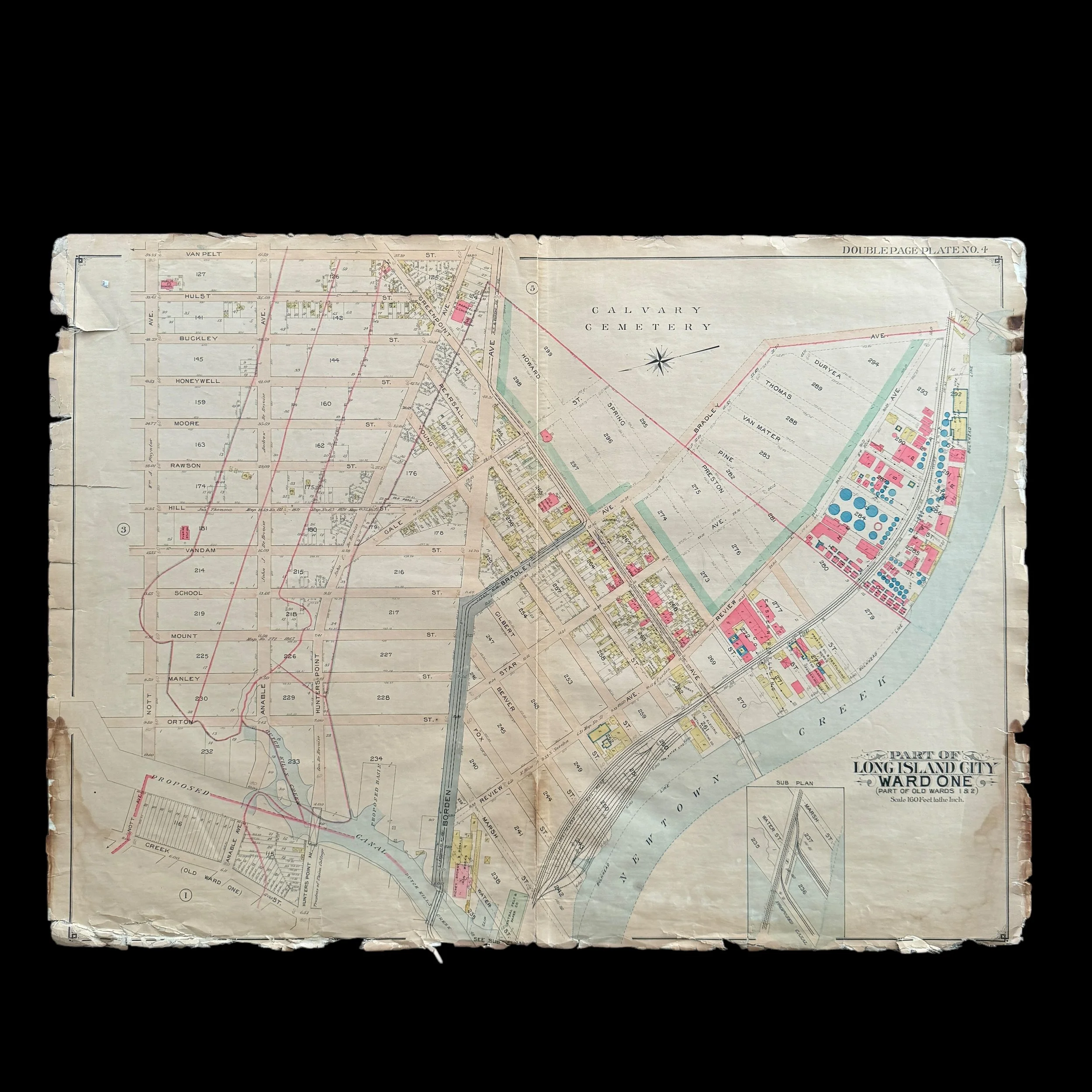
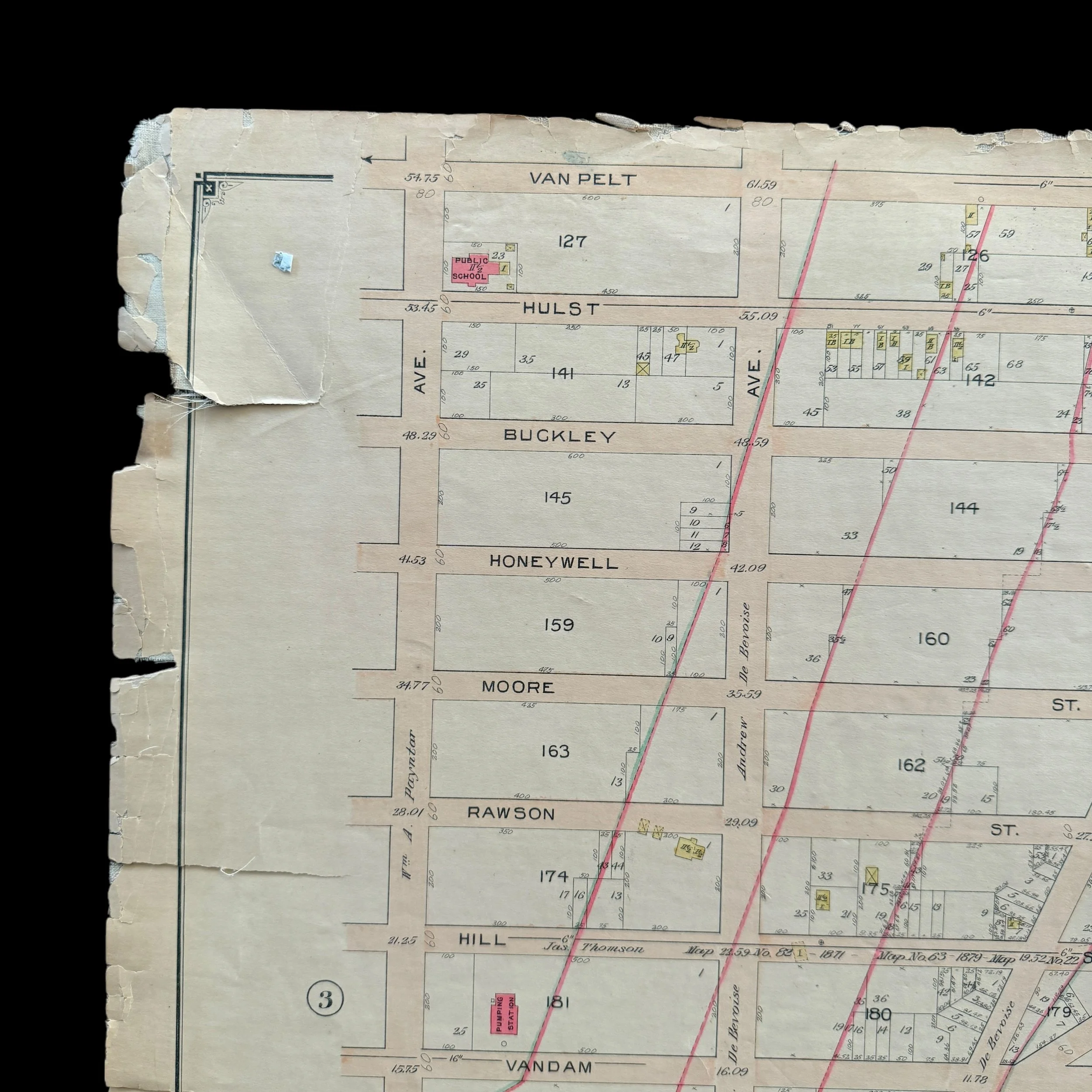
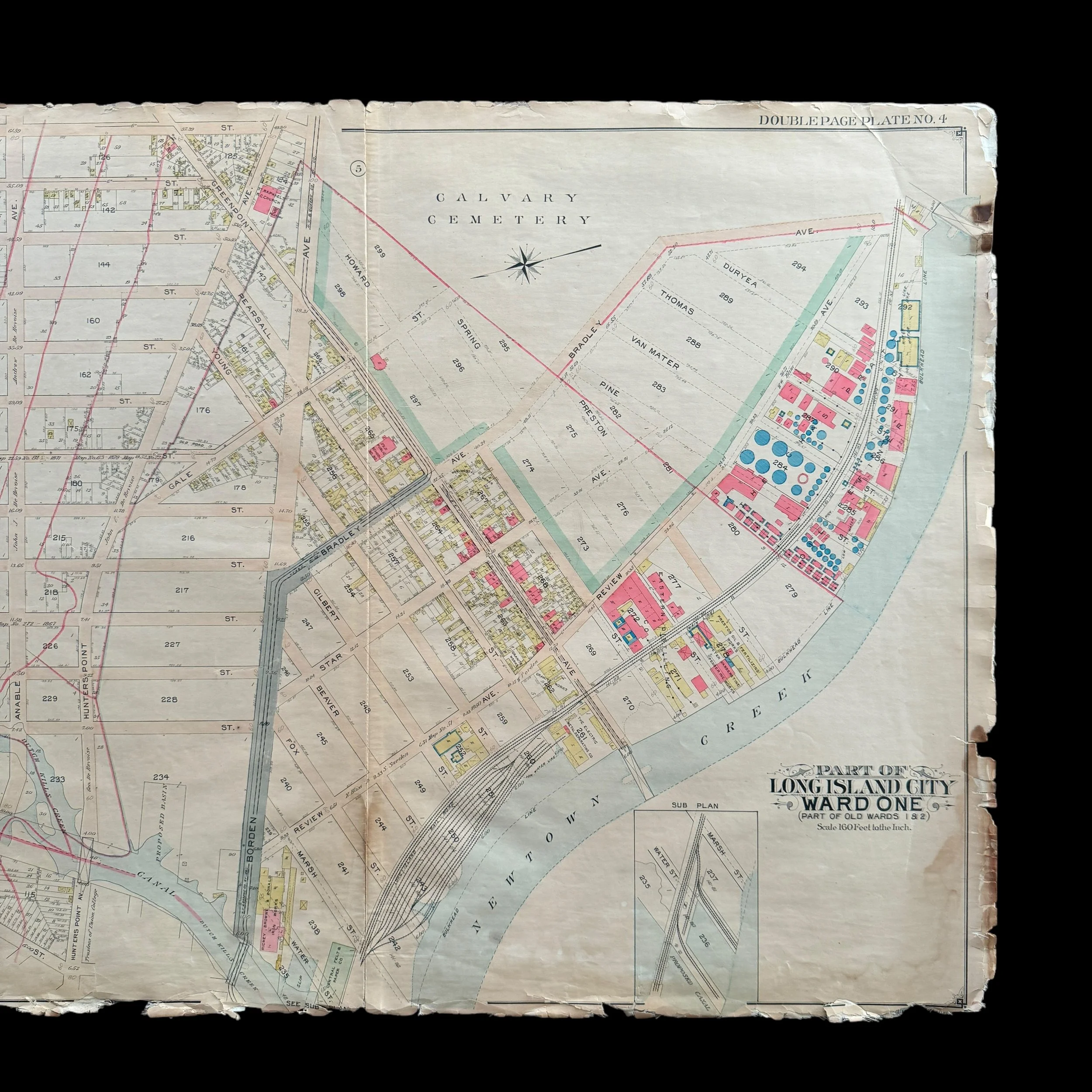

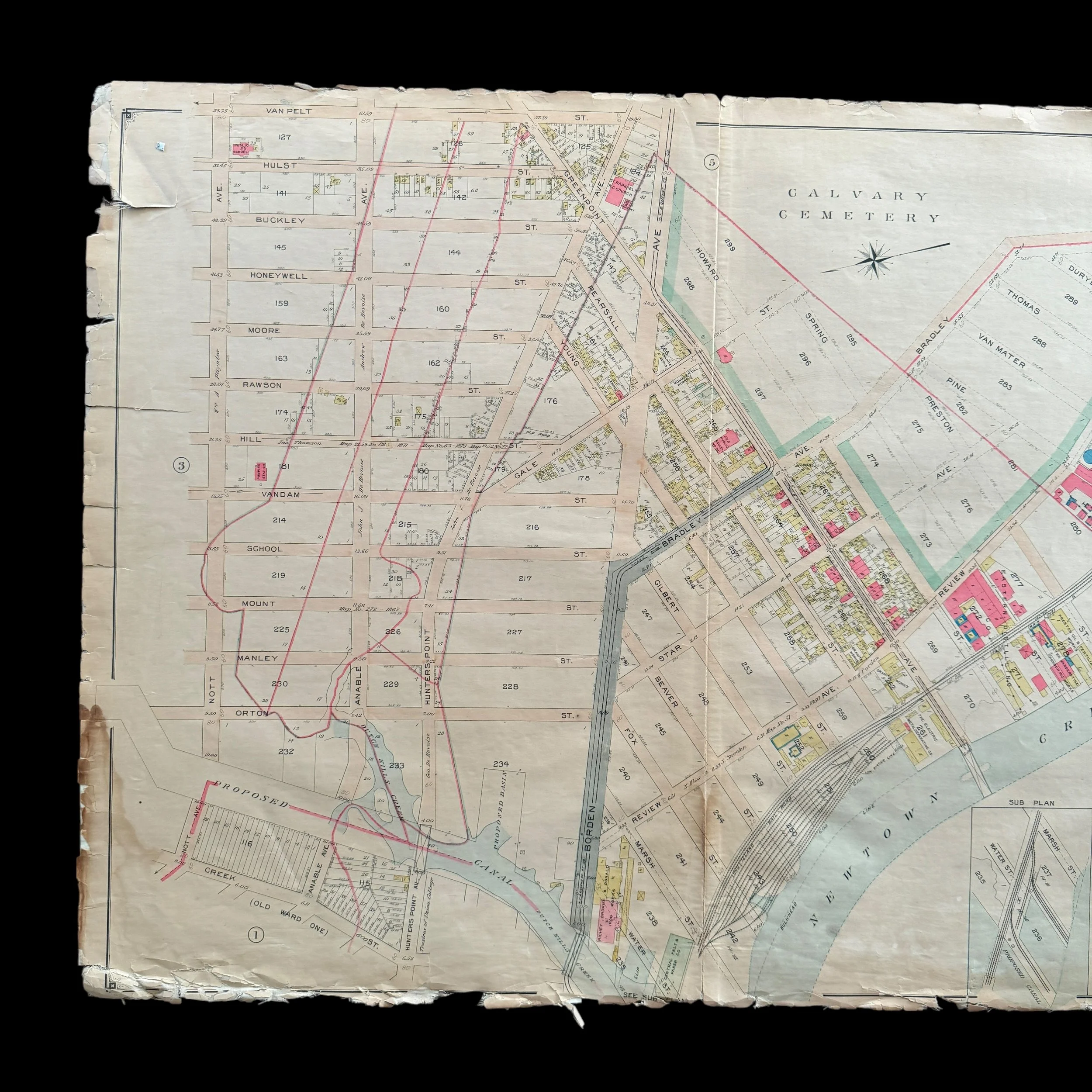
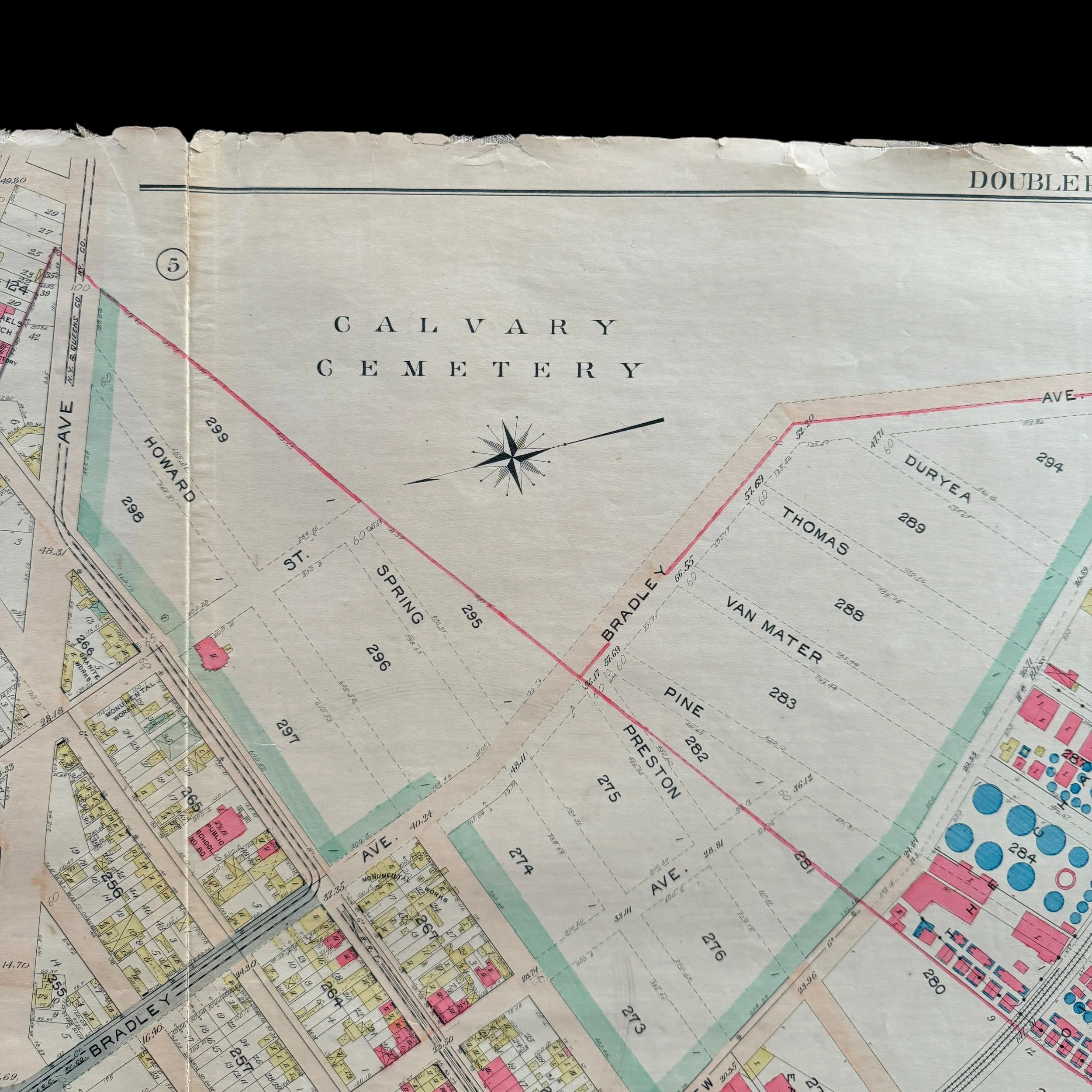
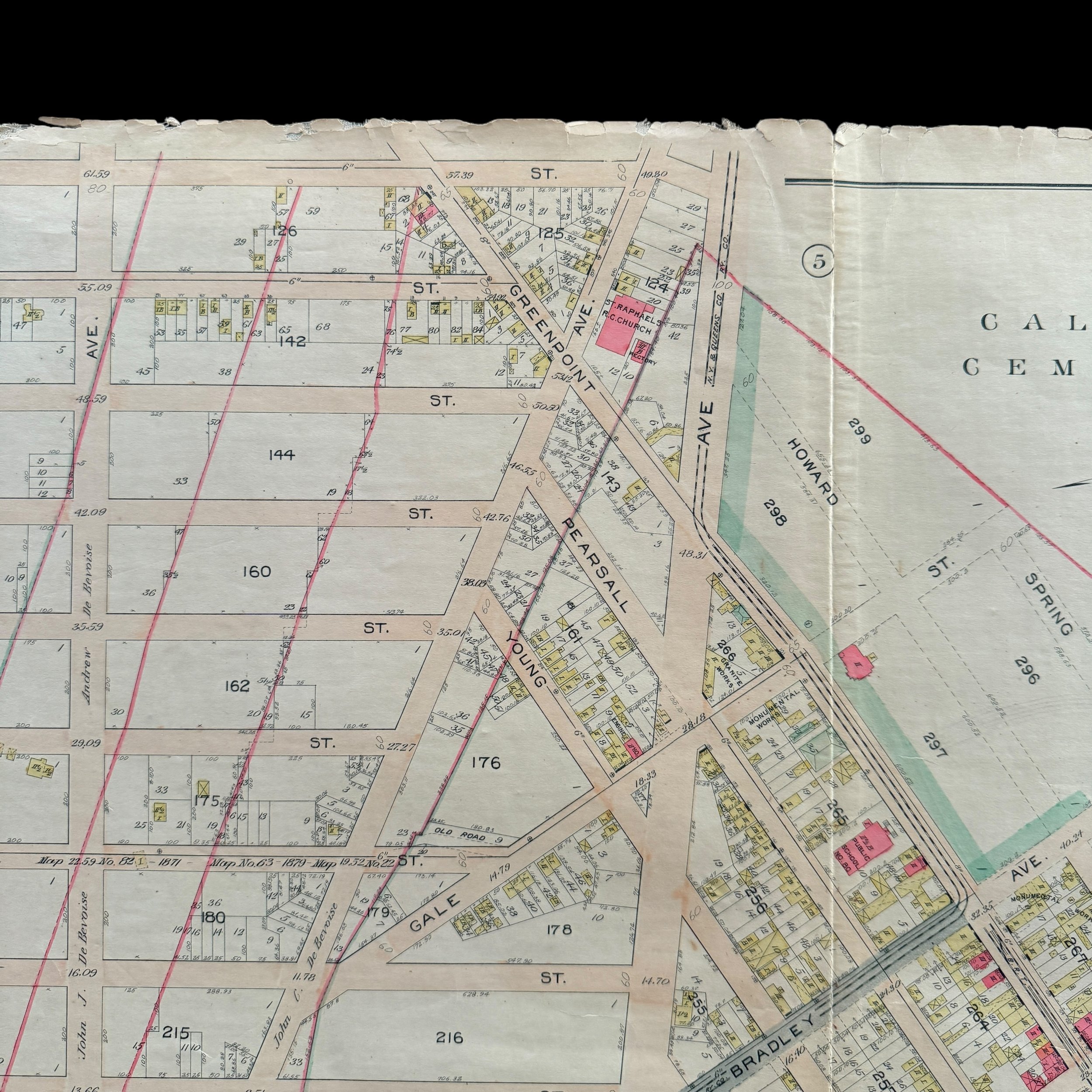
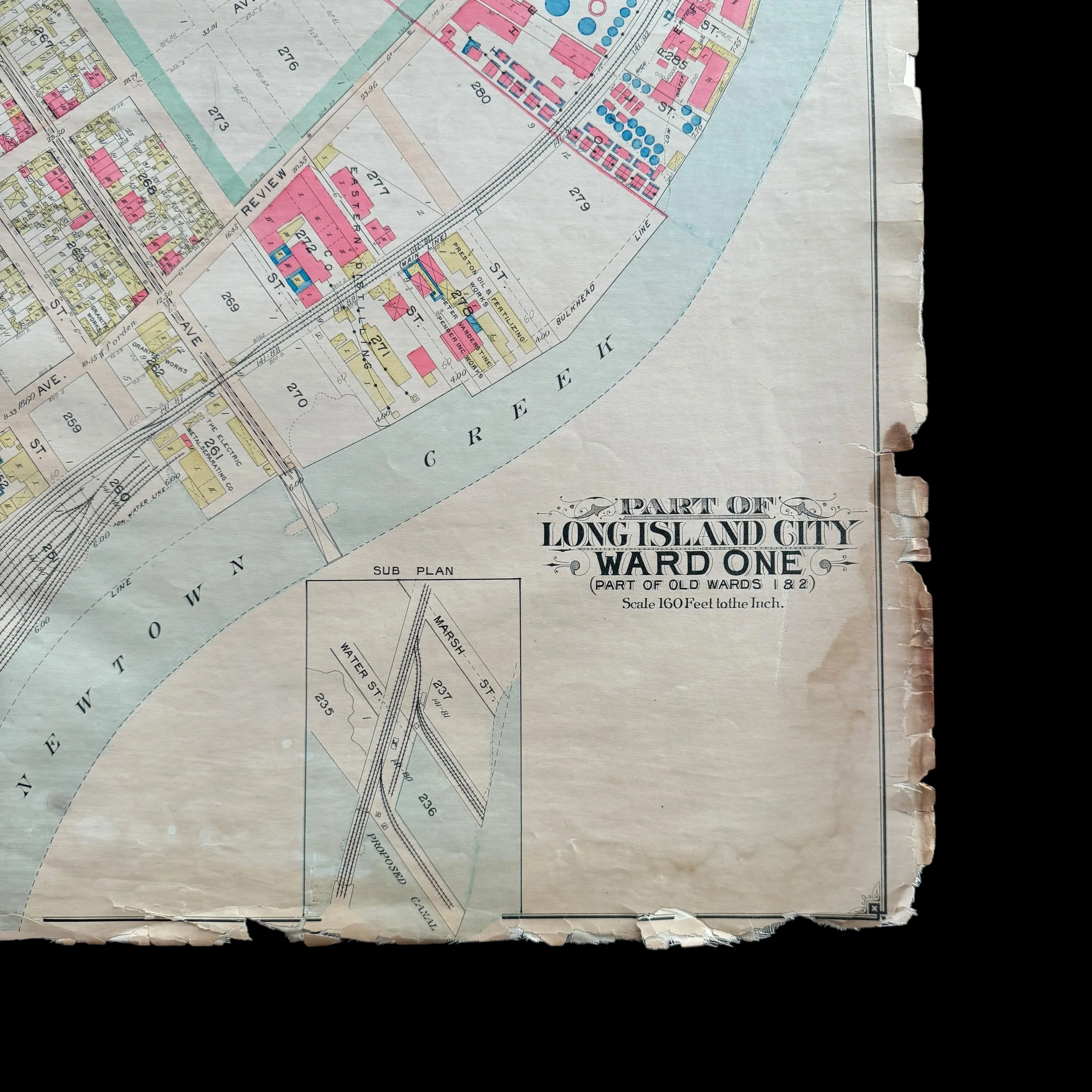
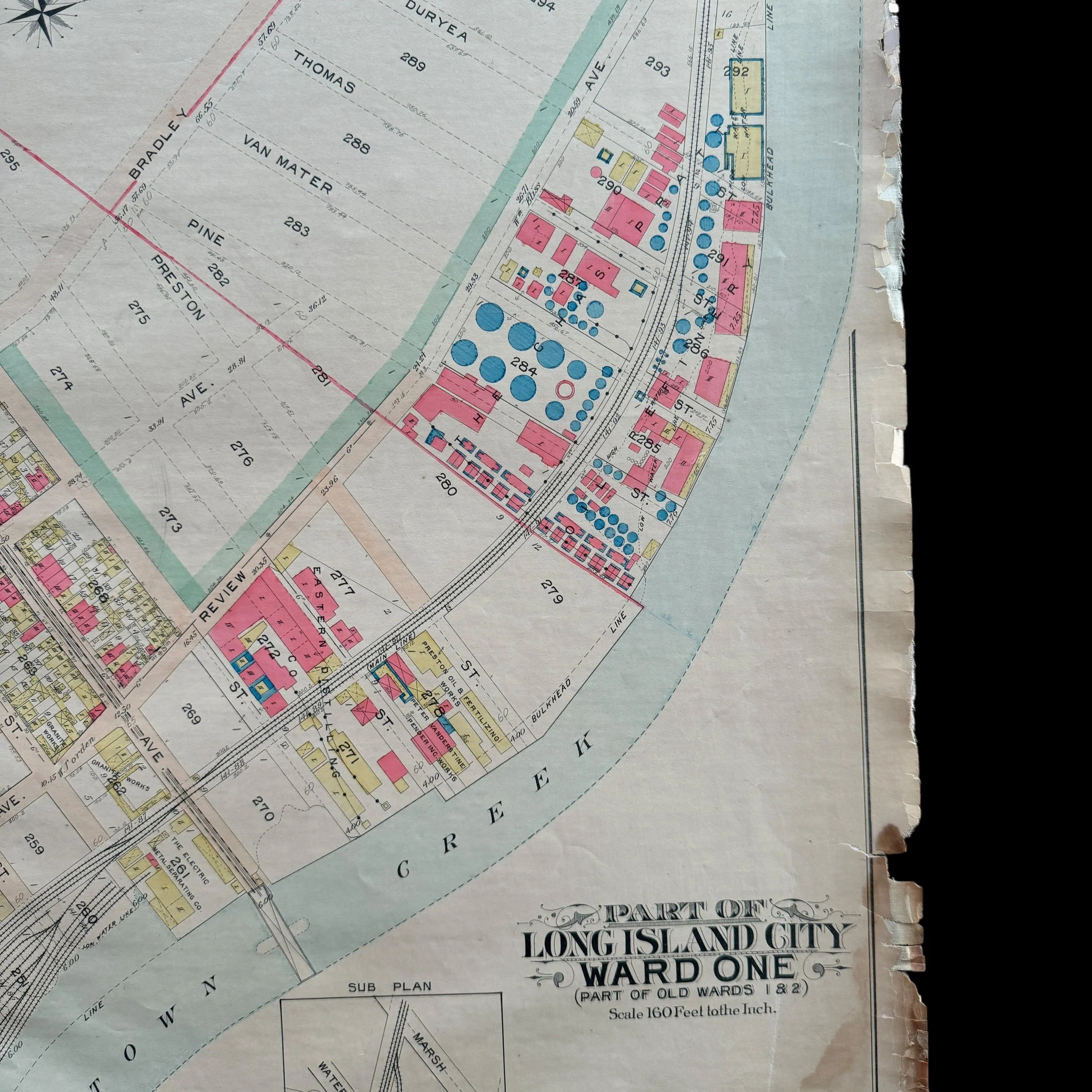
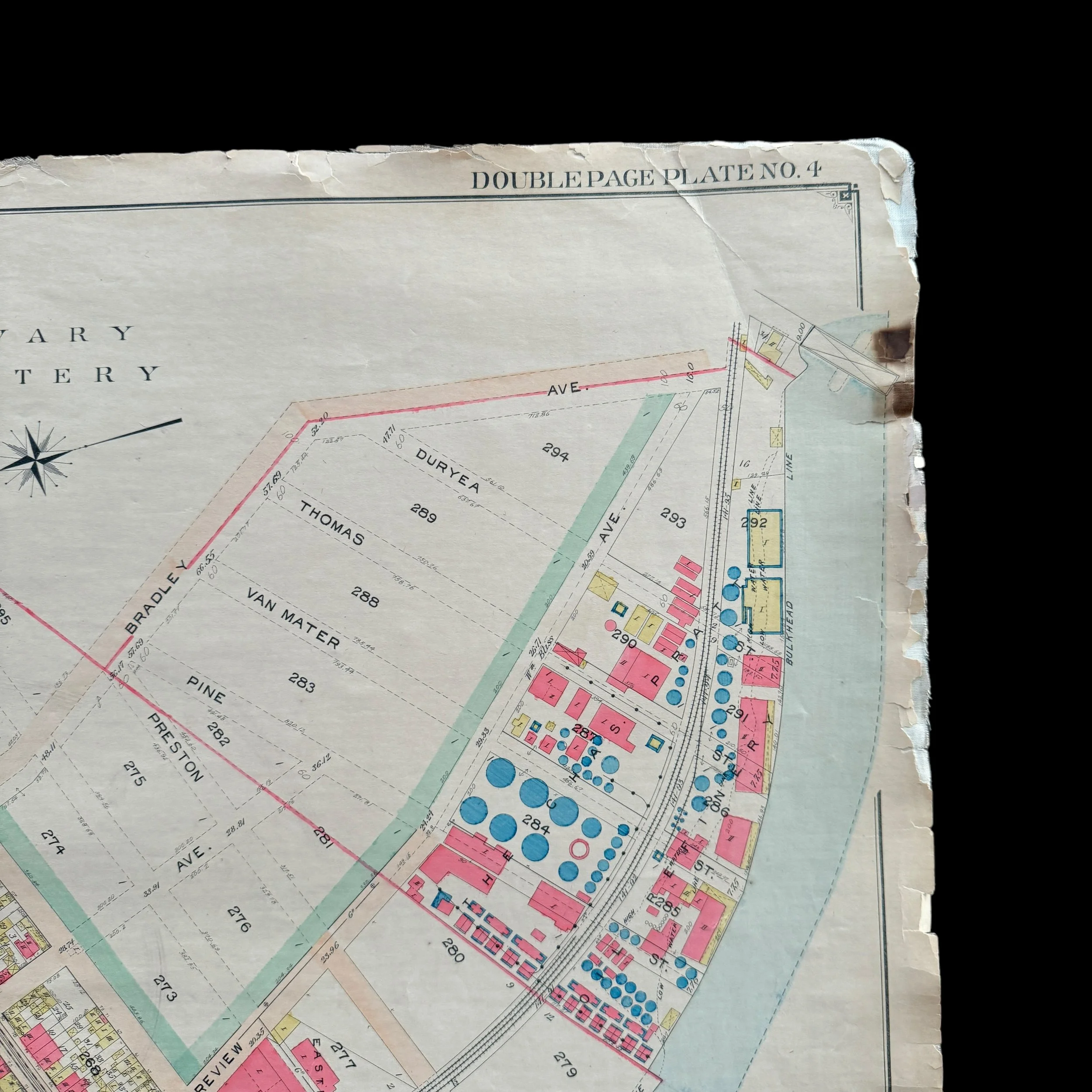
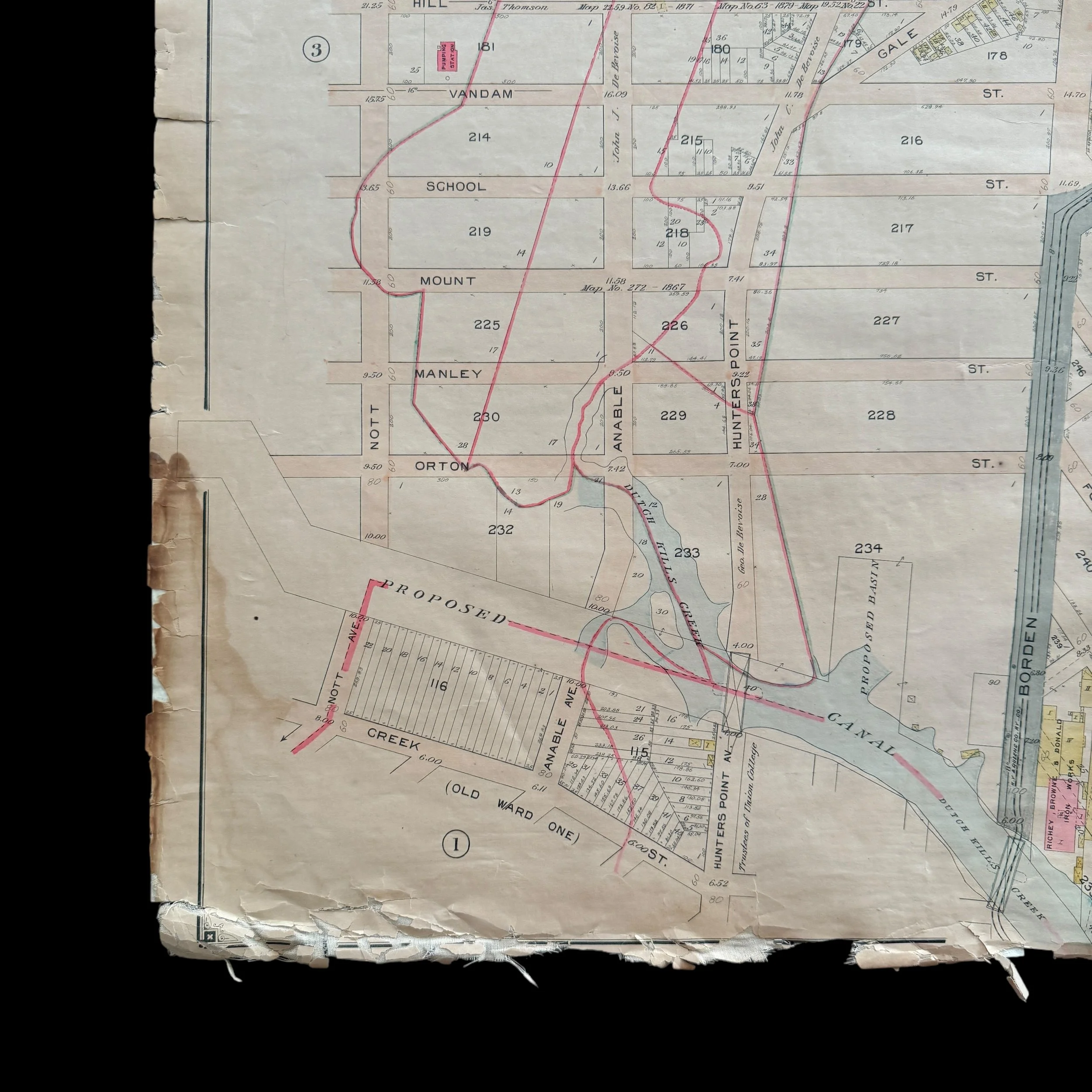
VERY RARE! Original 1903 New York City - Long Island City - Queens Early 1900's NYC Blueprint Map (PLATE 04)*
Comes with a hand-signed C.O.A.
*This is an extremely rare piece of original early 1900s New York City history that would make a stunning centerpiece in any collection. Framed and displayed, this original 1903 NYC blueprint would not only serve as a captivating conversation piece but also as a tangible link to the city’s past. Its detailed craftsmanship and historical significance make it perfect for anyone passionate about New York City's rich architectural and urban development history. Whether featured in a private collection, office, or historical space, this rare blueprint is sure to become a treasured heirloom that celebrates the evolution of one of the world's greatest cities.
Size: 27 × 37 inches
Dated: 1903
Place: New York - Brooklyn - Queens
Publisher: E. Belcher Hyde
Features: Water St., Marsh St., Proposed Canal]; Part of Long Island City Ward One (Part of Old Wards 1 & 2 ) [Map bounded by Nott Ave., Anable Ave., Hunters Point Ave., Borden Ave., Bradley Ave., Green Point Ave., Review Ave., Newtown Creek, Star Ave.; Including Vanpelt St., Hulst St., Honeywell St., Moore St., Rawson St., Hill St., Vandam St., Gale St., School St., Mount St., Manley St., Orton St., Pearsall St., Young St., Gilbert St., Beaver St., Marsh St., Water St., Howard St., Spring St., Preston St., Pine St., Van Mater St., Thomas St., Dufyea St
This extremely rare, museum-grade artifact from early 1900s New York City is an original 1903 blueprint map that is a heavily used and marked blueprint was created by the renowned cartographer and publisher E. Belcher Hyde, whose detailed real estate and property maps of New York City and Long Island in the late 19th and early 20th centuries are revered for their precision and historical significance.
At more than 100 years old, this original NYC blueprint is part of a larger series that meticulously documented various sections of New York City, including Queens, Brooklyn, and other boroughs. These maps captured the rapid urban development during a time of major transformation for the city.
In 1903, NYC was at the heart of significant change, having been incorporated into Greater New York City just five years earlier in 1898. The area was transitioning from a largely industrial and residential neighborhood into a more integrated part of the bustling metropolis. Detailed blueprints like this one were vital to guiding that development, serving as indispensable tools for real estate professionals, city planners, and developers.
E. Belcher Hyde's blueprint for NYC offered a wealth of information, from property boundaries and building footprints to street layouts, lot numbers, and ownership details. The blueprint also included railways, waterways, and industrial zones, making it an essential resource for planning new developments and infrastructure. These blueprints were not just practical but legal documents, often used to resolve disputes over property lines and land use.
Hyde’s attention to detail and accuracy in cartography ensured that his blueprints reflected the rapidly changing landscape of New York City at the turn of the century. Today, the 1903 blueprint is a valuable historical artifact, offering a detailed glimpse into the urban planning and development of Long Island City during this pivotal era.
Maps published by E. Belcher Hyde are now considered some of the most important historical documents of the time, providing an unparalleled snapshot of New York City’s growth, land use, and infrastructure at the height of their transformation into a global metropolis.
This is truly a once-in-a-lifetime opportunity to own a one-of-a-kind piece of New York City history. This original 1903 E. Belcher Hyde blueprint is the only known version available for purchase in the public sector. With the majority of these rare blueprints held in private museum collections, opportunities like this are exceedingly rare, making this a unique chance to own an authentic artifact of New York’s early 20th-century development.
Long Island City (LIC), located in the westernmost part of Queens, New York City, has a rich and diverse history that has evolved significantly over the years. Known today for its stunning waterfront views, contemporary art scene, and booming residential development, LIC's story is deeply intertwined with the industrial growth of the 20th century, particularly the early 1900s. This essay explores the transformation of Long Island City during this period, focusing on its industrial roots, architectural development, and the social dynamics that defined the area.
Early Beginnings and Industrialization
Long Island City was incorporated in 1870, encompassing the villages of Astoria, Ravenswood, Hunters Point, Dutch Kills, and Blissville. The city's proximity to Manhattan and its strategic location along the East River made it an attractive site for industrial expansion. By the late 19th century, LIC had already established itself as a hub of manufacturing and industry. Its waterfront offered ideal conditions for factories and warehouses, which required easy access to transportation networks.
The early 1900s marked a period of rapid growth and transformation for LIC, as the area became a central part of New York City's industrial heartland. Factories producing everything from paints, varnishes, and chemicals to machinery, furniture, and textiles sprouted along the waterfront and beyond. Industries like the American Eveready Company and the Sunshine Biscuit Company became prominent fixtures in the area, reflecting the diverse manufacturing activity taking place. This influx of factories and businesses turned LIC into an economic powerhouse, providing thousands of jobs and attracting waves of workers, many of whom were immigrants seeking opportunities in the growing metropolis.
Transportation and Infrastructure Development
The development of Long Island City in the 1900s was also closely tied to improvements in transportation and infrastructure. The Queensboro Bridge, opened in 1909, played a crucial role in connecting LIC to Manhattan. This monumental bridge transformed the area by making it easier for both people and goods to move between Queens and the economic center of New York City. It not only facilitated the daily commute for workers but also stimulated the growth of businesses and industries eager to take advantage of the bridge's strategic location.
Another important infrastructure development was the expansion of the Long Island Rail Road (LIRR). LIC served as a major terminal for the LIRR, making it a vital transportation hub for the region. The railroad’s presence reinforced the area’s identity as an industrial center, allowing goods to be transported efficiently from LIC’s factories to other parts of New York and beyond. The integration of various transportation networks—rail, road, and ferry services—enabled the area to thrive economically, establishing LIC as one of the city’s most important industrial zones.
Architectural and Urban Development
With the growth of industry and transportation came significant architectural and urban changes in Long Island City. The 1900s saw the construction of several prominent industrial buildings, many of which still stand today as symbols of LIC’s industrial past. Factories, warehouses, and manufacturing plants dominated the skyline, showcasing a utilitarian architectural style designed to accommodate the needs of production and distribution.
Among the most notable structures was the Standard Motor Products Building, built in the early 20th century. It became a landmark of industrial architecture in LIC, symbolizing the city’s role in automobile manufacturing and parts production. Other significant sites included the Pepsi-Cola bottling plant and the Eagle Electric Manufacturing Company, which became household names, contributing to LIC’s reputation as a manufacturing hub.
Residential development also began to take shape during this period, particularly to accommodate the influx of workers. Modest apartment buildings and row houses sprang up alongside the industrial zones, providing housing for laborers and their families. However, the proximity of residential areas to factories meant that LIC remained largely working-class, with a landscape dominated by smoke, noise, and the hustle of industry.
Economic and Social Dynamics
The industrial boom of the 1900s brought both prosperity and challenges to Long Island City. While the area thrived economically, with many industries setting up shop and creating employment opportunities, it also faced the negative consequences of rapid urbanization. Environmental pollution was a significant issue as factories emitted smoke and waste into the air and waterways. The East River, once a natural resource for the community, became increasingly polluted due to industrial runoff and the lack of environmental regulations during that era.
The social dynamics of LIC during the early 1900s were shaped by its status as a working-class, immigrant community. The labor force in LIC’s factories was diverse, with a mix of European immigrants, including Irish, Italian, and Eastern European workers, who settled in the area seeking economic opportunities. These immigrant communities played a crucial role in shaping the neighborhood’s culture and identity, contributing to the vibrancy and resilience of LIC despite its industrial challenges.
Labor movements also became prominent during this time as workers sought to improve their living and working conditions. Labor strikes, unionization efforts, and community activism were common as factory workers fought for fair wages, safer working environments, and reasonable working hours. LIC was part of the broader labor movement sweeping through New York City in the early 20th century, illustrating the area's role not just as an industrial hub but also as a center for social and political change.
Transition and Decline in the Mid-20th Century
The post-World War II period marked a turning point for Long Island City. While the early 1900s were characterized by industrial growth and prosperity, the mid-20th century saw a gradual decline in manufacturing activity. Advances in technology, changing economic conditions, and the suburbanization trend led many industries to relocate to other parts of the country where land was cheaper, and transportation networks were more modern.
As factories closed and jobs disappeared, LIC began to experience economic stagnation and urban decay. Many of the once-bustling industrial buildings became vacant, and the area struggled with unemployment and disinvestment. However, despite these challenges, LIC’s industrial heritage left a lasting legacy on the area’s physical and cultural landscape.
Preservation and Reinvention in the Late 20th Century
By the late 20th century, efforts to preserve and reinvent Long Island City’s industrial identity gained momentum. The community, recognizing the historical and architectural value of its industrial past, began transforming the old factories and warehouses into new spaces for art, culture, and business. The rise of the contemporary art scene in LIC, spearheaded by the establishment of institutions like MoMA PS1 in the 1970s, was one of the first signs of this transformation. Artists, drawn by the affordable space and industrial aesthetic, started moving into the area, turning old manufacturing sites into studios and galleries.
The history of Long Island City in the 1900s is a story of transformation driven by industry, infrastructure, and the aspirations of its working-class communities. From its early days as an industrial powerhouse, through its mid-century decline, to its late 20th-century reinvention, LIC has continually adapted to the changing dynamics of New York City. Today, while the factories and smokestacks of the early 1900s are largely gone, the legacy of that period remains embedded in the architecture, culture, and spirit of Long Island City, reflecting the area’s resilience and capacity for renewal.